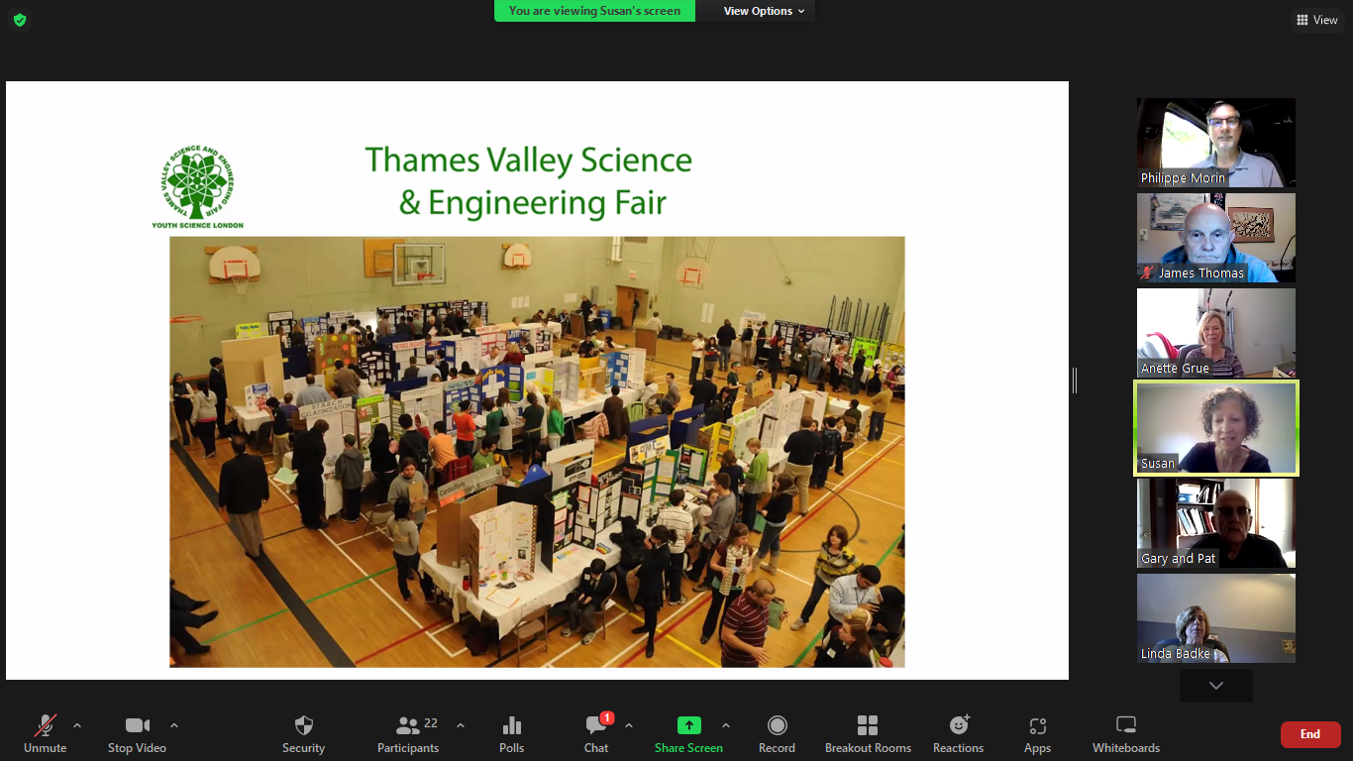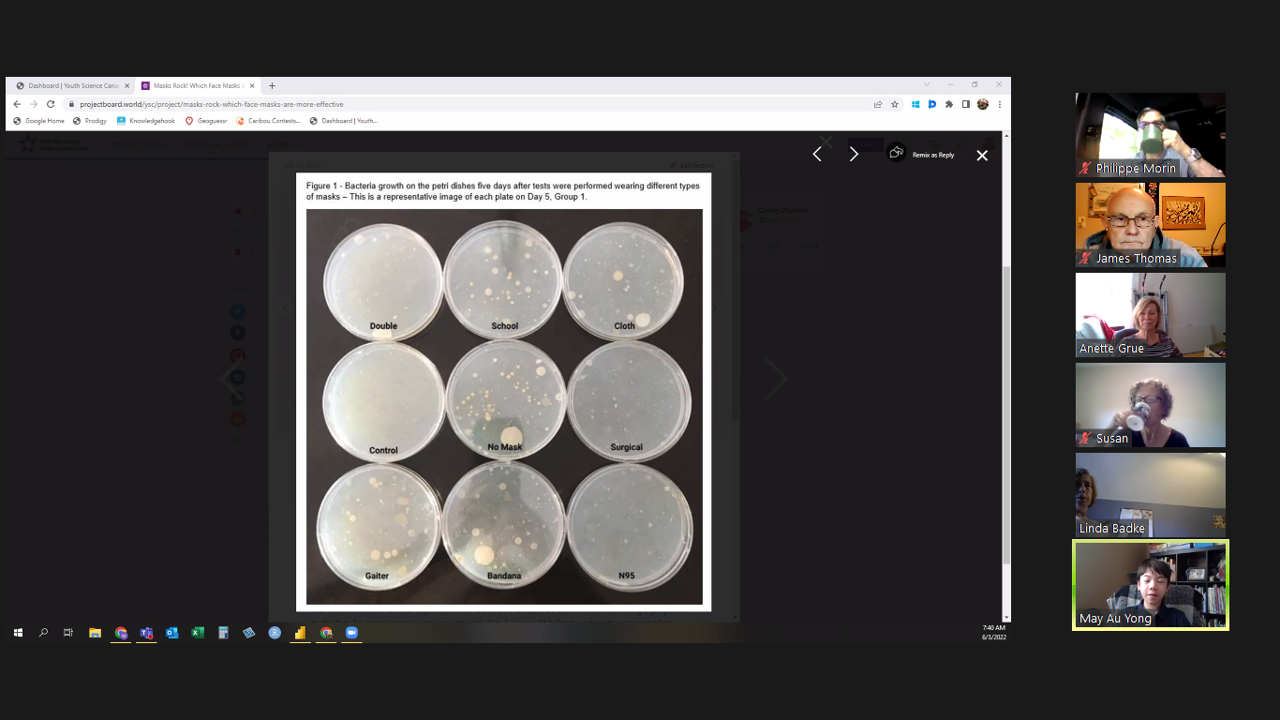Susan Lindsay, the coordinator for the Thames Valley Science and Engineering Fair, and four students presented their work at this year’s fair.

Katie Buchel presented her work on angular momentum in diving.
Kevin Shao presented his work on robotics using AI, machine learning coupled with visual systems to sort items.
Nathan Jansen presented his work on the effectiveness of various corrosion treatments.
Caden Oilphant presented his study of the effectiveness of different kinds of face masks in limiting the spread of bacteria.
Katie Buchel videoed two divers performing dives in tuck and pike dives and calculated the angular momentum for each diver to determine how their respective rate of spin differed the angular momentum. She did this by superimposing lines on the video to represent velocity and the radius of spin. Using the data from her projections she calculated the angular momentum of each diver in the two diving positions. This was a creative method that involved both her interest in physics and the sport of diving.

Kevin Shao is involved in setting up a club for the science fair club at Central. He worked with other students to help them with planning and creating science fair projects. His project involved programming a robot arm to pick and sort three different shaped Lego objects. To do the sorting the robot untiled AI and machine learning to identify objects using a visual system and repeated sorting experience.
Nathan Jansen treated sample pieces of mild steel coated with three different types of rust preventative and subjected them to water spray, saltwater spray, saltwater immersion, and temperature fluctuation. He recorded the results and compared them.

Caden Oliphant compared 7 different types of face masks and spoke, sang, coughed over a petri dish using the different kinds of masks. He compared the growth of bacteria in petri dishes to a control dish and a dish exposed to the same activities without a mask. He then compared the relative results by type of mask.


